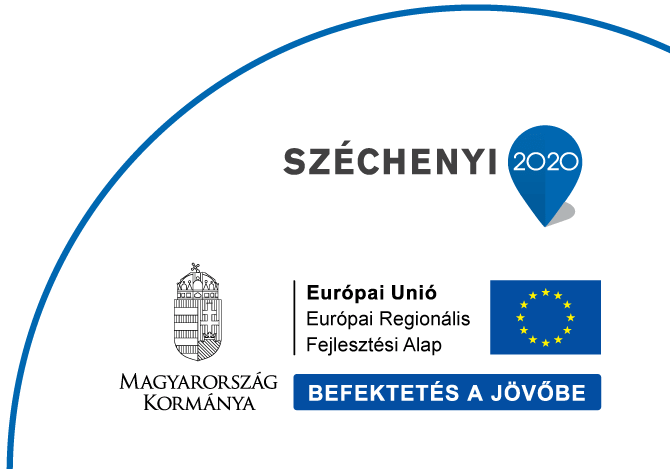Femtonics invites you to watch an educational and engaging series of webinars.
We have started the series with the aim to share our expertise in neuroscience and advanced microscopy in a safe virtual space. Our presenters are highly quilified professionals with thorough experience in state-of-the-art imaging techniques: Katalin Ócsai, PhD, Tamás Tompa, PhD, Eszter Markó and Dénes Pálfi, PhD. Dozens of professionals have listened eagerly to our sessions. Now, the four webinars are available to anyone.
Our application specialists are always ready to introduce you the setup and answer your questions.
Who we are
We support the world’s top research scientists in achieving cutting-edge results by providing them with the most advanced multiphoton imaging system. To answer the neuroscience community’s emerging need to study cellular processes in all three dimensions in the brain, we developed a 3D acousto-optic scanner-based two-photon microscope with a million times faster scanning speed than what devices were capable of before. Advance your research in neuroscience with Femtonics microscopes!
Session 4
From Voltages to Real-time Motion Correction (The Femtonics FocusPinner)
Discover the unique advantages of Voltage Imaging and Real-time Motion Correction on our 3D acousto-optic microscopes.
Our NEW webinar is divided into two parts. In the first segment, you’ll have the opportunity to discover the unique advantages of Voltage Imaging, presented by our Application Specialist and Senior Researcher, Tamás Tompa PhD. Then, starting at 8:43, our second part will focus on Real-time Motion Correction, the Femtonics FocusPinner, featuring insights from Katalin Ócsai PhD, Head of Software & AI Department.
Voltage indicators have recently become viable biological tools for studying the brain. This has paved the way for a completely new era of neuroscience, for which only the best methods and techniques will provide a way to keep up. In our new webinar, we will discuss how our acousto-optic method perfectly adapts to this shift. We will also introduce our newest development, the Femtonics FocusPinner, which is our Real-time Motion Correction technique that eliminates motion artifacts. Combined with our special scan methods, it offers unique advantages that no other microscopes can.
In this webinar, we will discuss, among other topics:
- How the acousto-optic technology works
- Its ability to achieve scanning speeds of up to 100 kHz
- What other features are well-suited to overcome the difficulties of voltage imaging
- The features of Femtonics FocusPinner (RTMC)
- How it significantly improves the Signal-to-Noise Ratio (SNR)
- How it also corrects in the axial/Z direction.
If you are interested in more in-depth discussions, please feel free to get in touch with us.
Session 3
An Atlas for the Brain: two-photon fluorescence microscopy
Mapping neuronal activities, from the network to the spine scale in 3D, a million times faster than conventional two-photon fluorescence microscopy
The FEMTO3D Atlas has been created to help understand the computational properties of the brain by measuring processes on the 3D neuronal network level. Besides ultra-fast 3D region scanning, our instrument is capable of high-speed arbitrary frame scanning, in vivo 4D volume scanning, effective motion correction of the recordings, and provides an option for precise and fast photostimulation; representing an All-in-One solution.
In this webinar, you will learn more about the practical applications of the Atlas, namely:
- How the Atlas’ special scanning techniques can connect dimensions, from the network scale through cells and dendrites to spines.
- Why these advanced 3D scanning modes are the best choice yet to record the neural activity of numerous cells simultaneously in a large 3D volume.
- Why motion correction offered by the Atlas is essential during research involving behaving animals.
- The benefits of simultaneous 3D imaging and 3D photostimulation
- Questions and Answers
If you are interested in more in-depth discussions feel free to get in touch with us.
Session 2
Tune in to the Brain – multiphoton microscopy
Revealing the secrets of the 3D acousto-optic technology in multiphoton stimulation and imaging
The unique and innovative 3D acousto-optic technology, which is at the core of the FEMTO3D Atlas microscope, grants extraordinary optical performance and unprecedented 3D resolution to this All-in-One device. With this technology, the in vivo physiological activity of the brain, heart, or any other organ can be examined in real time in 3D, one million times faster compared to conventional two-photon microscopy.
Discover more about the technology and learn about the following topics:
- Short introduction: Femtonics microscopy platforms
- What is 3D acousto-optic microscopy?
- Technological innovations powering 3D acousto-optic microscopy
- Two-photon imaging with 3D acousto-optic technology
- Femto3D Atlas: highest value All-in-One platform for life science
- Questions and Answers
If you are interested in more in-depth discussions feel free to get in touch with us.
Session 1
Smart solutions, Smart microscopes
State-of-the-art developments in multiphoton imaging for neuroscience
Learn about the newest developments in the field of neuroscience and multiphoton imaging:
- Short introduction: Femtonics solutions
- Why is it important to have a stable, modular microscope design?
- Where to apply the benefits of Galvo-Galvo based applications?
- Where to apply the benefits of Resonant-Galvo based applications?
- How to perform simultaneous imaging and photostimulation applications?
- Why are our solutions unique?
- Questions and Answers
Presenters
|
KATALIN ÓCSAI PhD Head of Software & AI Department, Developer of 3D Real-Time Motion Correction As a data scientist with a strong mathematical background and extensive software development experience, I have always been interested in finding optimal solutions to scientific questions by combining state-of-the-art mathematical models with the latest technological methods. At Femtonics, I work on the most exciting algorithmic problems in neuroscience: first, how to measure signals as quickly and widely as possible from the largest possible area while maintaining the best possible quality; second, how to find the appropriate computational neuroscience model to interpret the data in order to draw the right conclusions from experiments. I am particularly interested in artificial intelligence-based approaches to biological questions to better understand the patterns of large neurophysical datasets. My job is a wonderful combination of mathematics, computer science and neuroscience, so every day I can marvel at the mysteries of how our brains work.
|
|
|
TAMÁS TOMPA PhD Application Specialist & Senior Researcher Neuroscientist by formation I have worked and still work in the field of visual neurophysiology. I am enthusiastic about the diversity of methods approaching the CNS and I am especially keen about imaging. At Femtonics I am doing what I like the most: using cutting edge imaging and other recording tools, doing science whilst as an application specialist, keep fellow scientists informed, work with them, understanding their respective goals and methods they use. At the same time I function as a college professor, strenghtening my interpersonal knowledge transfer skills. |
|
|
DÉNES PÁLFI PhD Head of Application Specialists ver the past 10 years, I have become familiar with conventional and high-end multiphoton microscope imaging technologies and I have spent four years doing my PhD in neuroscience. Although my main interest is physics I have also spent a considerable time to gain knowledge in neurobiology and programming. After my PhD years I started to focus on industrial processes and I continued my work at Femtonics as an Application Specialist. At present, I am leading the Application Specialist team.
|
|
Subscribe to our newsletter and get first-hand information about the next webinar!
Stay up to date and receive the latest neuroscience news or updates about us straight to your inbox.




